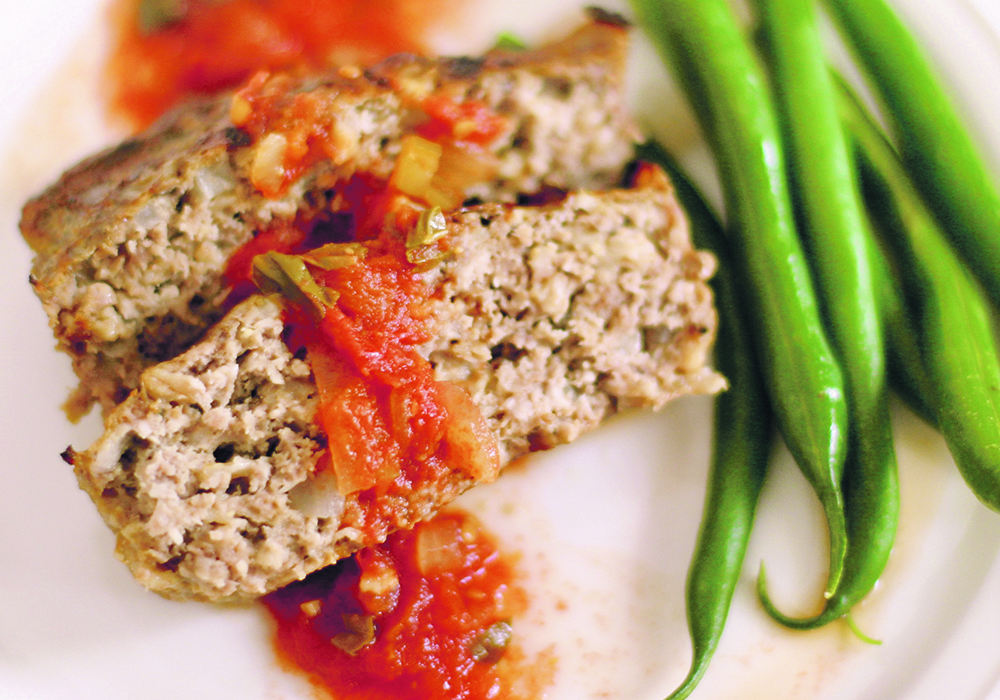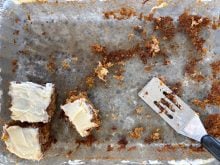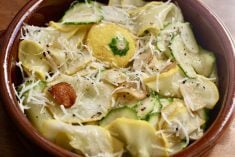Remembrance Day reminds me, of course, of all the people who sacrificed their lives in wars, so that we might live better.
But it also reminds me of the food rationing people experienced then and the terrible food waste of today.
The Western Producer recently reported that families waste 58 percent of the food they buy. This adds up to a whopping $3,500 per year per household. This is significant. Perhaps there are lessons that can be learned from the past.
Early in the war, Canadians were asked to contribute voluntarily to Canada’s food export commitments by avoiding foods that were needed in Britain to feed the allied troops and by consuming more Canadian foods whose European export markets had disappeared and were, therefore, threatening farmers and fishers with massive unused surpluses. Apples and lobster were two of the earliest foods to be rebranded as patriotic after the export markets for both products collapsed.
Read Also

Rural Manitoba resources slim on natural disaster planning
A study from Brandon University’s Rural Development Institute has found that many rural and small municipalities don’t have the staff or resources to make formal climate plans against natural disaster.
From the midpoint of the war, Canadian families dealt with shortages of sugar, meat, butter and gasoline. Rationing coupons were issued to provide a fair share to all.
Victory gardens were encouraged. At school and at home, wherever there was a free patch of land, seeds were planted and vegetables were tended.
Nutrition also emerged as a national priority during the early years of the Second World War.
In 1941, following warnings from the country’s leading nutrition experts that up to 60 percent of the country was suffering from some form of vitamin and mineral deficiency, and following the release of figures showing alarming rates of medical rejections by the Canadian military, the federal government responded by launching their first ever national nutrition education program.
Starting with the creation of a federal Nutrition Services Division in 1941 and the launch of the Canadian Nutrition Program the following year, Canadians were inundated with nutrition advice during the war years. This campaign introduced Canada’s Official Food Rules, the precursor to today’s Canada Food Guide.
For a factual and light-hearted look at food in the typical Canadian home watch the episode Back in Time for Dinner 1940s. This a CBC series highlighting each decade of our food and it is available free online.
For more information on Food on the Homefront read from War Time Canada at https://wartimecanada.ca.
Challenge yourself to reduce your grocery expenses by not wasting food.
Beef loaf
Rolled oats was used as a meat extender. It bulked up the meat so that serving sizes could be larger. It was also nutritious.
- 3/4 lb. ground beef 365 g
- 1/4 lb. ground pork 115 g
- 1 egg
- 1 c. milk or thinned gravy 250 mL
- 1/2 c. rolled oats 125 mL
- 1 tsp. salt 5 mL
- 1/8 tsp. pepper .5 mL
- pinch of sage, optional
- 2 tbsp. finely chopped onion 30 mL
Mix beef and pork. Beat egg, add milk or gravy and blend well with meat mixture
Add rolled oats and seasonings, stir until smooth and thoroughly mixed.
Pack in greased loaf tin and cover with greased paper. Remove paper for the last 20 minutes.
Bake in a moderate oven, 375 F (190 C). Bake for about one hour, 15 minutes. Serves five.
This can be served with a tomato sauce or ketchup, oven fried onion rings, scalloped potatoes and sweet sour cabbage.
A tossed green salad and deep rhubarb pie will make everyone forget ration problems. (From Ration Recipes, Robin Hood Flour Mills Limited).
Tips to save sugar
Don’t experiment with your sugar ration… use tested recipes.
Cook dried fruits in the water they soaked in. Little or no sugar will be needed for sweetening.
Use a plain sugar syrup or one from canned fruit to sweeten cold drinks. If sugar is used in hot beverages stir until completely dissolved.
Try reducing the sugar by two tablespoons when making your pre-war baked desserts. They will taste just as good. (Taken from a brochure from The Department of Agriculture, Canada. 1942).
Alternative cake toppings:
Place bold-patterned paper or lace doily over top of warm cake. Sprinkle powdered sugar over it and remove doily carefully. A pattern is left on the cake.
Dust spice cakes with powdered sugar while warm.
Sprinkle tops of plain cakes or spice cakes, while hot, with grated orange or lemon rind. Sprinkle tops of chocolate cakes, while hot, with finely chopped nutmeats, when available.
Frost plain cakes with the family’s favourite jam.
Sprinkle chopped dried fruits on cakes before baking.
(From Economy Recipes for Canada’s “Housoldiers” by the Canada Starch Company Limited, 1943).
Apple upside-down cake
- 3 tbsp. butter 45 mL
- 1/3 c. brown sugar 75 mL
- 3 apples
- 1/4 c. butter 60 mL
- 3 tbsp. white sugar 45 mL
- 1 egg
- 1/3 c. molasses 75 mL
- 1 c. pastry flour 250 mL
- 1 tsp. baking powder 5 mL
- 1/2 tsp. baking soda 2 mL
- 1/8 tsp. salt .5 mL
- 1 tsp. ginger 5 mL
- 1/2 tsp. cinnamon 2 mL
- 1/3 c. boiling water 75 mL
Melt three tablespoons (45 millilitres) butter in baking dish and add brown sugar and cook together for two to three minutes.
An eight- or nine-inch (22-23 centimetre) cake pan is ideal. Pare and core apples and cut in half to make two thick rings. Arrange on top of the butter and brown sugar.
Cream 1/4 cup butter (60 mL) with three tablespoons (45 mL) white sugar.
Add well beaten egg and molasses. Beat thoroughly.
Sift dry ingredients together and add to the butter mixture.
Lastly, add the boiling water and mix together quickly.
Pour over the apple rings. Bake in a moderate oven at 325 F (160 C) for about 40 minutes. Serves six. (Department of Agriculture, Canada, 1942)
Home-baked beans Boston style
- 2 c. navy beans or marrow fat beans 500 mL
- 1/4 lb. salt pork 115 g
- 1 tbsp. minced onion 15 mL
- 1 tsp. salt 5 mL
- 1/2 tsp. dry mustard 2 mL
- 1 tbsp. molasses 15 mL
- 3 tbsp. brown sugar 45 mL
Look over beans carefully, removing any black particles that may be found. Put into a colander and wash by letting cold water run over them. Put into a pot and cover well with cold water. Let sit overnight.
The next morning drain off water, cover with fresh water and heat to boiling and simmer 20 minutes. Drain. While beans are simmering, cut salt pork into cubes. Measure and mix seasonings. Add seasonings to beans, mixing them through well. Put into greased bean pot or casserole. Bury salt pork in beans.
Pour in hot water to cover. Cover dish and bake in a slow oven (250 to 300 F or 120-150 C) until beans are tender, from five to six hours.
Remove cover last 30 minutes of cooking, to brown. Add boiling water as needed.
The beans should be tender, but not mushy. This amount serves six to eight people. The recipe may be doubled.
All brown sugar may be used instead of molasses, or all molasses may be used. (From How to Eat Well Though Rationed, 1943)
Fish balls
My father sometimes talked about the food rations during the Second World War and he always came back to telling us how much he disliked salt cod. For prairie home cooks it would have been challenging to make it tasty.
To make the onion juice, I placed coarsely chopped onion in my garlic press. Salt cod can sometimes be found in the refrigerated section of the grocery store beside the meats.
This recipe can be formed into balls or fish cakes.
- 1 c. fish 250 mL
- 1 1/2 c. mashed potatoes 375 mL
- 1 egg, beaten
- 1 tbsp. butter, melted 15 mL
- pepper and salt to season
- 1/2 tsp. onion juice 2 mL
Any cooked, flaked fish may be used. Mix the ingredients well and beat until fluffy. Form in balls or cakes and roll in finely, sifted dry bread crumbs. The fish balls may be chilled until it is time to sauté or deep fry. An inch (2.5 cm) cube of stale bread should brown in the fat in 40 seconds. Drain and serve hot, with or without a sauce. Serves four or five.
If salt codfish is used, tear it in shreds and refresh by covering with water. Change the water several times then cover with cold water and just bring to the boil, or simmer. This will further freshen the fish (From The Maritime Cookbook, 1939).
Sarah Galvin is a home economist, teacher and farmers’ market vendor at Swift Current, Sask., and a member of Team Resources. She writes a blog at allourfingersinthepie.blogspot.ca. Contact: team@producer.com.
















